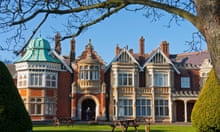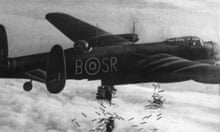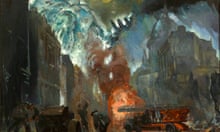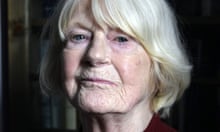It was the biggest mass evacuation in the UK, executed over three days, and would not have been possible without an army of women – and one in particular.
Eighty years after 1.5 million children, pregnant women and other vulnerable people were displaced from cities to the safer countryside three days before Britain declared war on Germany, the scale of such a feat remains impressive.
“They had been preparing since the beginning of the year. More than 120,000 visitors had been going around 5m homes in the country in billeting services, and the majority of those people were Women’s Voluntary Services (WVS) women,” said Matthew McMurray, the keeper of heritage of the RVS (Royal Voluntary Service), as the WVS is now known.
The order to evacuate forthwith was made on 31 August 1939. But for more than a year a formidable female army had been recruited and trained, and was in place to execute it flawlessly.
They were recruited by Stella Isaacs, the Marchioness of Reading, whom McMurray called “probably one of the most important women in the world in the 20th century that nobody has heard of”. The widow of the former viceroy of India, Rufus Isaacs, started the WVS in March 1938 and by 1940 had recruited more than 1 million women.
Archives on the RVS website show her appeal, extolling her “personal magnetism”. “She had an equal magnetism for men and for women. You could go to any large social gathering and find all the men were surrounding Lady Reading, and the beautiful, young women left alone talking to each other,” wrote one contemporary.
Many of the WVS members were housewives and mothers, such as Nella Last, whose wartime diaries inspired Housewife, 49, the drama written by and starring the late Victoria Wood.
“The housewives service was really about women who can’t get out of their houses, doing small things to help. Become a WVS housewife, you have a card in your window. If your street gets bombed, you’re the person everyone goes to for first aid, or for a cup of tea, or for the emergency services to go to to find out who is missing in your street,” said McMurray.

In their spare time, they would knit hats, gloves and scarves for the Arctic convoys. The Red Army in Stalingrad were marching on socks knitted by WVS ladies in Britain. The WVS ran canteens for service personnel, clothes stores for evacuee children and food centres in bombed-out areas, and used furniture centres to help bombed-out people furnish new homes.
They collected salvage, including paper for wadding in bullets. Though they weren’t supposed to, some even made molotov cocktails for the home guard.
Their duties were innumerable. In 1941, when younger women were required to register for work in factories, they provided nursery care.
“This was completely different from the way the Axis powers saw women. Their role in Germany was to bring up the next generation of members of the Third Reich, not to help other people in the way we did in Britain,” said McMurray.
He said of the evacuation: “While it’s chaos in those three days, it’s really organised chaos.” The WVS escorted children from their homes to stations, accompanied them on trains, picked them up at their destinations. More than 120,000 were working with the local authorities to make it happen.
Not always to everyone’s satisfaction. The WVS archives contain one disgruntled report from Caernarfon, north Wales, on receiving evacuee children and mothers. It reads: “The quota for mothers and babies was exceeded in every case and the type of person evacuated made it impossible to take them into an ordinary home.” It described evacuated women as “abusive, refused to be separated from their friends, and quite without manners and morals”.
As bombing didn’t start until the beginning of 1940, many of those evacuated in that first wave returned home, only to have to be evacuated all over again once the air raids began in earnest. A total of 3.75 million would eventually be evacuated.
The legacy of those original WVS members born in extraordinary circumstances is continued by the volunteer work RVS undertakes in hospitals and communities today.
“I would argue, and I think certain academics would as well, that those women won the war,” added McMurray.










